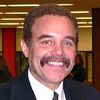Overt and institutional racism in the United States give the phrase "haves and have-nots" a whole new meaning.
Too often, when black and brown Americans are overrepresented -- as a percentage of the poor or people in prisons, failing schools, or dead-end special education programs -- it also means that they are marginalized in our society. This past year brought one of the most troubling illustrations of where such marginalization leads --black and brown people being wrongly killed by police action in a growing number of communities.
But we also lose people in other ways when children and young adults of color are underrepresented in the work force or the ranks of high school and college graduates and sidelined as onlookers to the success of others rather than being the beneficiaries.
Fueled by racism, these and other statistics perpetuate our culture of stereotypes. Ours is a land where practically everything, from the nature of intelligence and definition of beauty to assumptions about why some succeed and others do not, is grounded in one's wallet or skin color.
My professional career is dedicated to discrediting one of these stereotypes: that a culture of poverty causes academic failure.
In "Pathologizing the Language and Culture of Poor Children," an article written for Language Arts, a professional journal for elementary and middle school educators, authors Curt Dudley-Marling and Krista Lucas take on the so-called "30 million word gap," referring to the vocabulary gap between children from the wealthiest and poorest families.
"The primary source," they write "...that poor children grow up in linguistically impoverished environments [which] limit their success in school is [based on] an enormously influential 1995 study of vocabulary development by Betty Hart and Todd Risley." Surprisingly, the Hart-Risley study is grounded in a very small study, with some conclusions "based... on a sample of 6 Black welfare families living in Kansas City," Dudley-Marling and Lucas write.
Yet the Hart-Risley word-gap study also represents more of the same. Black and brown children have been seen as empty vessels or blank slates since the days of 17th-century philosopher John Locke. By 2005, Ruby Payne's book Framework for Understanding Poverty portrayed "people living in poverty as deficient in the cognitive, emotional, linguistic and spiritual resources needed to escape poverty," Dudley-Marling and Lucas wrote.
P. David Pearson, the esteemed University of Berkeley literacy professor, and I acknowledge the relationship between poverty and student access to good health and the tools (linguistic, cognitive, and dispositional) of academic and economic advancement.
But we think it's time to change the conversation.
Time and energy would be better spent understanding and promoting, rather than marginalizing, the knowledge these students bring to the classroom.
Their language practices allow them to effectively function in family and community settings. Rather than a weakness, students' home languages provide opportunities to bridge the academic gaps they may experience in school settings. The challenge is not a "30 million word gap," but a translation gap that can be narrowed with help from a dedicated, skilled teacher. The challenge brings to mind the wisdom of Dr. Jerome Bruner, who defined intelligence as not just what you know, but what you do when you don't know what to do.
Classrooms that create a "pedagogy of confidence" for their students provide the space for the linguistic, social and cognitive resources all students bring to learning. Delivering knowledge in a culturally responsive manner to student experience creates a kind of scaffold that allows complex concepts and subject matter to be synthesized. Making those connections between home and community to learning is the responsibility of teachers -- not parents.
When teachers take the time to listen to their students through their expressions, whether captured in word raps, social engagements, cultural explorations, music, the arts or in sports, the richness of culture emerges and the banality of deficit-driven assumptions evaporate.
Children know what they know. They bring what they bring.
Our job is not to wish that students knew more or knew differently. Our job is to turn students' individual knowledge -- and the collective range of knowledge the whole class brings -- into a curricular strength, rather than to regard it as an instructional inconvenience. We can do that only if we hold high expectations for all students, convey great respect for the knowledge, language and culture each brings to the classroom, and offer support in helping each student achieve those high expectations.
Now, more than ever, eliminating the stereotypes, structures and beliefs that hinder human potential is paramount. We find ourselves in a teachable moment in a campaign for human justice. The path to transformation begins in our schools.
________________
Eric J. Cooper is the founder and president of the National Urban Alliance for Effective Education, a nonprofit professional development organization that provides student-focused professional development, advocacy and organizational guidance to accelerate student achievement. He can be reached at e_cooper@nuatc.org. He tweets as @ECooper4556.
